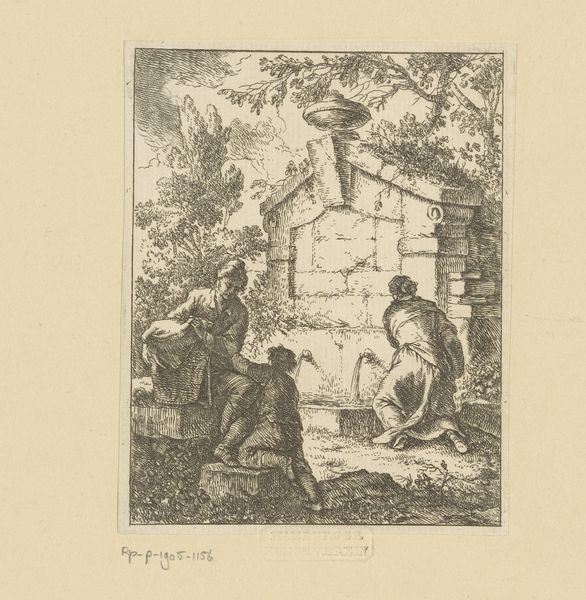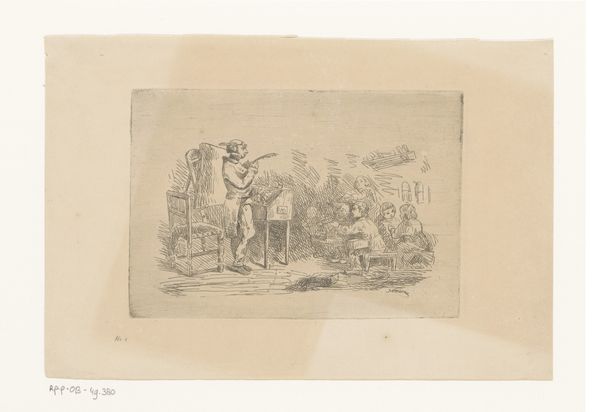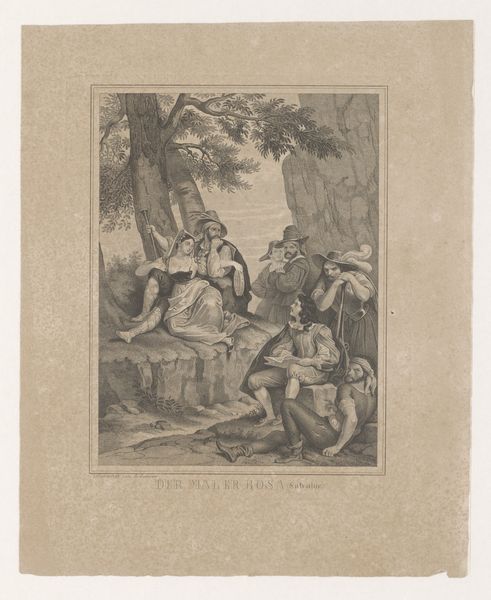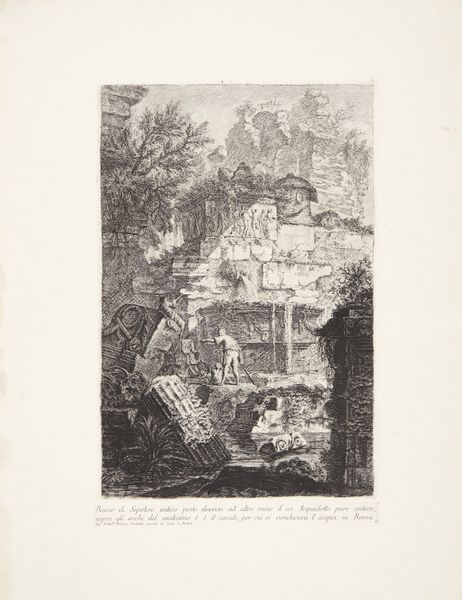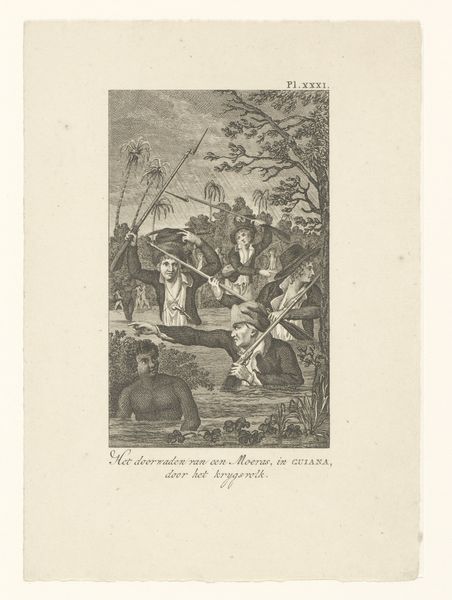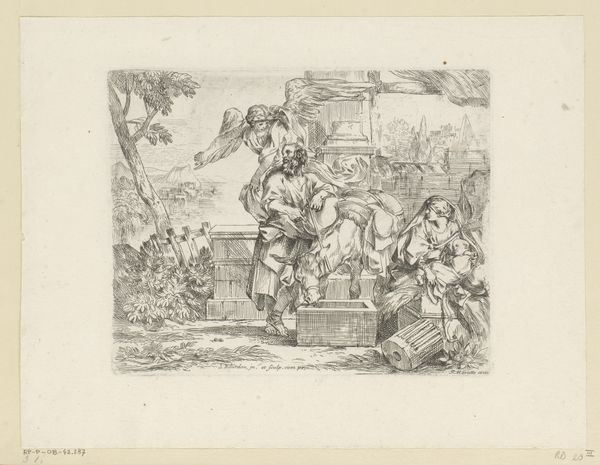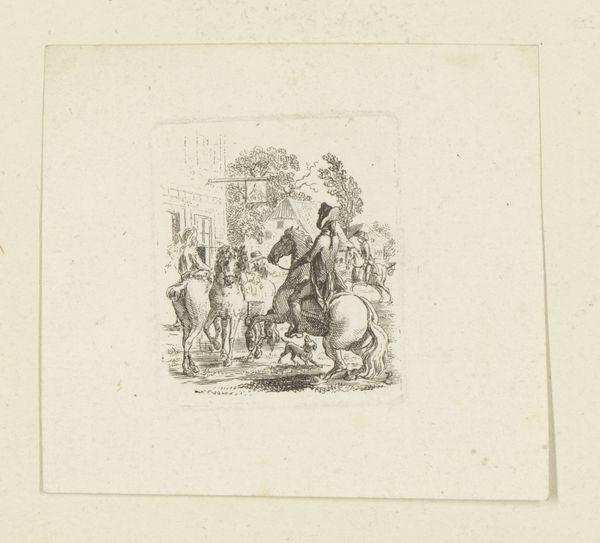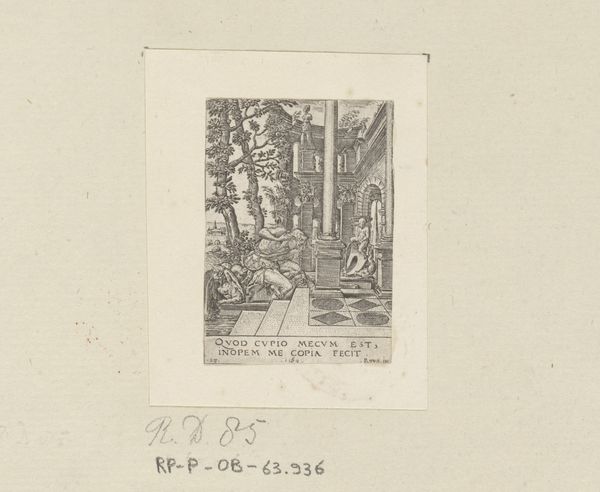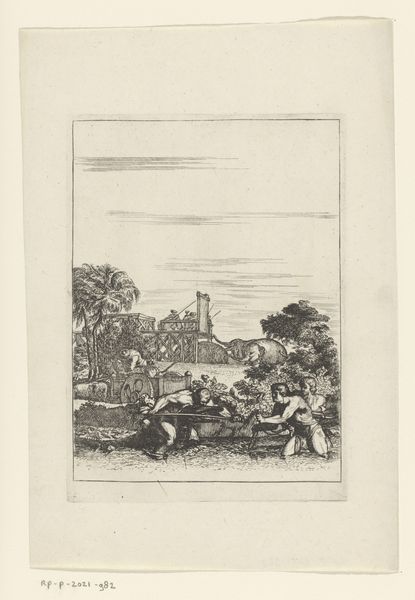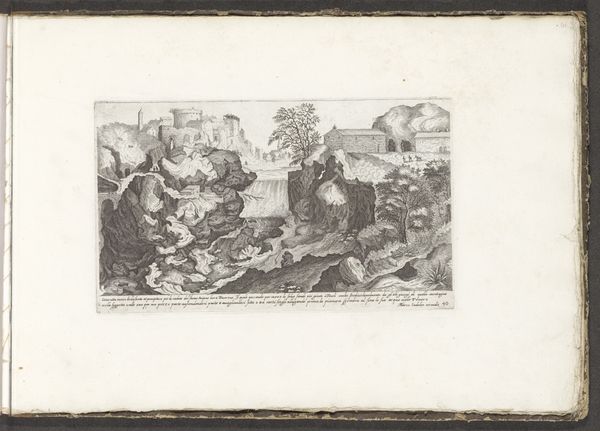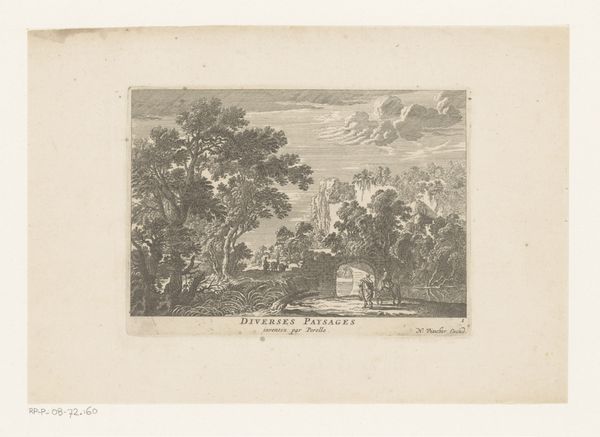
print, etching
#
narrative-art
#
baroque
# print
#
etching
#
dog
#
old engraving style
#
landscape
#
figuration
#
genre-painting
Dimensions: height 104 mm, width 81 mm
Copyright: Rijks Museum: Open Domain
Editor: This is "Three Shepherds by an Old Bridge," an etching by Franz de Paula Ferg, created sometime between 1699 and 1740. It’s a detailed scene, but the old engraving style gives it a rustic, almost rough-hewn feel. What stands out to you when you look at this piece? Curator: I notice how the process of etching, the labor involved in creating the image through a series of controlled corrosions, highlights the tension between art and craft. Consider the socioeconomic context: who was commissioning prints like these, and what was their value in relation to other forms of art production at the time? Editor: So you're saying that it's not just about the pretty landscape scene, but the *making* of it? How the work and material circumstances are important? Curator: Precisely! The very act of producing and distributing this print, as opposed to a unique painting, implies a different form of engagement with the art market, influencing its reception and purpose within society. Think of the consumption habits it reflects; it shows us who had access to art. Were prints like these aspirational objects for a rising middle class? Editor: That's a different way of considering art, not just pretty scenes, but products of a system of labour and economic exchange. Curator: And think about the social standing of those depicted in the landscape. The materiality and methods shape how we should also look at how labor is being performed. Editor: It really changes my perspective, seeing it less as a pastoral scene and more as a tiny window into the means of artistic production of the 18th Century. Thanks! Curator: Indeed, understanding the material conditions encourages us to see art as embedded in a web of production, labor, and social context.
Comments
No comments
Be the first to comment and join the conversation on the ultimate creative platform.
